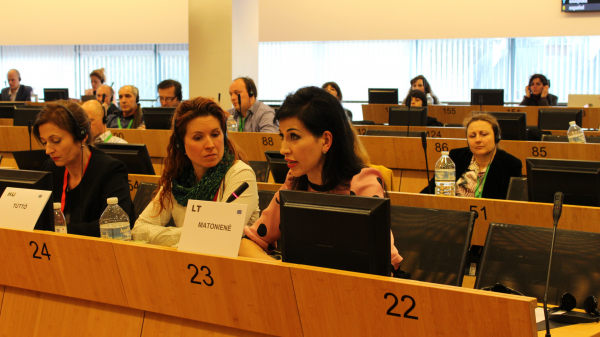Three ways to achieve a breakthrough on climate action

If you look at the whole history of EU action on climate change, you have to conclude that we are on the right track. But can we do better? An important change took place in Paris in 2015, when the countries agreed on a long-term goal: to restrict the rise in global average temperatures to well below 2°C compared with pre-industrial values. It is an even greater achievement that 166 states have ratified the Paris Agreement and that ratification is now complete in all EU Member States. An agreement is all well and good, but it is no less important to carry out concrete follow-up measures.
Where do we go from here? How can the Committee of the Regions and local and regional authorities contribute to efforts to achieve a breakthrough on climate action? Here are three ways in which we can stop climate change and protect the planet for future generations.
First, we have to ensure that tried and tested initiatives are continued. A good example would be the COP 23, where representatives of national, regional and local authorities worked together on the achievement of a common goal. I would recommend that the financial framework for the implementation of Covenant of Mayors demonstration projects be increased. It is also important to identify and support valuable initiatives and to encourage the setting of even more ambitious goals, but in a voluntary way, without dictating them to national authorities.
Secondly, the representatives of the local and regional level must be even more closely involved in achieving the climate protection goals, for example by publicising demonstration projects. The representatives of local and regional authorities can also make an important contribution by setting up local energy communities. The benefits of the bottom-up approach are often stressed in speeches, and these must not be empty words but must lead to concrete measures, with real powers for local-level institutions.
Thirdly, the basic and important part is to use all the measures to really work together, that is by promoting close cooperation between the EU, the Member States and local and regional authorities, the private and public sectors, NGOs and scientific organisations. As in Paris, we will only succeed if we work together and empower local and regional actors to be active players in designing, and not only implementing, energy solutions.
The Covenant of Mayors was launched in 2008 in Europe with the ambition to gather local governments voluntarily committed to achieving and exceeding the EU climate and energy targets. It now gathers more than 7,000 local and regional authorities from 57 countries.
Daiva Matonienė is a Member of Šiauliai City Municipal Council and was also the Deputy Minister of Environment of Lithuania. She has been a Member of the CoR since 2009. The article above is based on a speech delivered by Ms Matonienė during the meeting of the Ambassadors of the Covenant of Mayors in Brussels on 22 February 2018.

